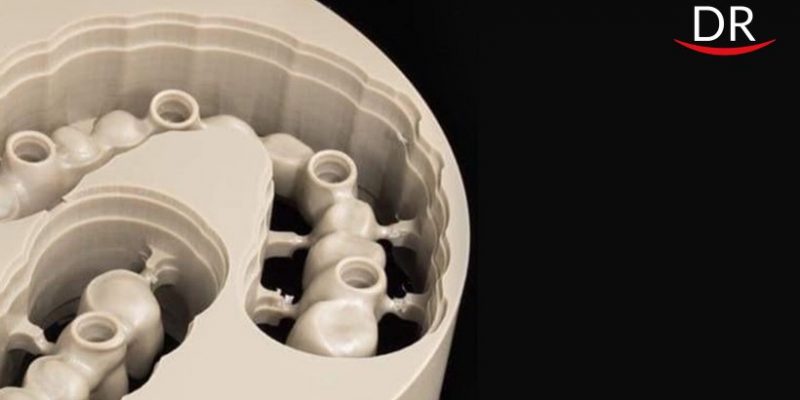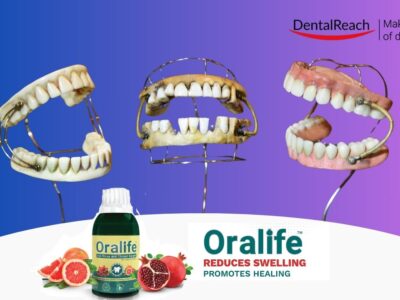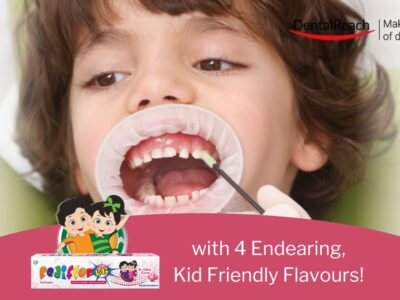The Discovery of PEEK – The Peak of Dental Materials
Introduction
Polyetheretherketone commonly known as PEEK is a tooth coloured as well as synthetic biomaterial that has been used in the field of orthopedics since a very long time. The etheretherketone monomer unit gets polymerised through a complex dialkylation reaction to form Polyetheretherketone. PEEK is found to be a semi crystalline material and has a melting point of 343 degree centigrade. PEEK can be easily modified by
a) Prepolymerisation – By the addition of functionalised monomers
b) Postpolymerisation – By chemical processes like amination or nitration
Properties
- Young’s modulus : 3.6 GPa
- Tensile strength : 90-100 MPa
- Glass Transition temperature : 143 Celsius
- Melting point : 343 Celsius
- Operating temperature : upto 250 Celsius
- Highly resistant to thermal degradation
- Soluble in conc H2SO4 in room temperature
- Highly resistant to biodegradation
Applications
Being a robust material, PEEK is used in a number of general industrial items including bearings, piston parts and pumps and electrical cable insulators. PEEK is considered as an advanced biomaterial which can be used in medical and dental implants. PEEK is white in colour and exhibits good mechanical properties, as a result it can be easily used in prosthodontics in the fabrication of FPDs and RPDs. Other than this, it is also used as an esthetic orthodontic wire.
PEEK as an Implant Material
Wolffe’s law states that bone remodels according to the force that is applied to it. Stress shielding is hence done by decreasing the amount of bone around an implant to reduce the load on the implant. Finite element analysis of PEEK implants showed that they are capable to induce less stress shielding than that of titanium implants. However, since PEEK dental implants have not been used widely clinically, it is unknown if there is a difference between the bone resorption around PEEK and titanium implants in human subjects. Moreover, a recent FEA study by Sarot et al has suggested that the stress distribution between PEEK and titanium dental implants is almost similar. Animal studies have suggested that PEEK can easily survive for a minimum of 3 years after which it starts inducing localised inflammation. Some specific studies have even showed that there is no such difference in the osseointegration of PEEK and that of the traditional implant biomaterials like that of titanium and zirconia. Some other studies have also not found any huge difference between the bio-inertness of PEEK, titanium and that of zirconia. Taking adequate biocompatibility into consideration, implant healing abutments can be constructed using PEEK. A randomised, controlled clinical trial (RCT) which was conducted by Koutouzis et al. even suggested that there is no significant difference in the bone resorption and soft tissue inflammation around PEEK and titanium abutments.
PEEK as a Removable Prosthesis Material
PEEK is another material that can be used an alternative to PMMA for CAD-CAM restorations. CAD-CAM dentures can also be easily constructed using PEEK. The clasps that have been constructed using PEEK can be used in the anterior abutments as well because it is of tooth colour, but they have lower retentive forces than that of the cobalt chromium clasps. However, due to the better mechanical and biological properties of PEEK, it is most likely to be used to construct dentures in the near future.
PEEK CAD-CAM Milled Fixed Partial Dentures
Using CAD-CAM to manufacture restorations makes it easier to make dental prostheses at chair-side. CAD-CAM designed composites and polymethylmethacrylate (PMMA) fixed dentures have superior mechanical properties as compared to conventional fixed dentures. Three-unit PEEK fixed partial denture manufactured via CAD-CAM has been suggested to have a higher fracture resistance than pressed granular or pellet-shaped PEEK dentures. The fracture resistance of the CAD-CAM milled PEEK fixed dentures is much higher than those of lithium disilicate glass-ceramic (950N), alumina (851N), zirconia (981-1331N).
PEEK Crowns
A variety of procedures have been suggested to condition the surface of PEEK in order to facilitate its bonding with resin composite crowns. Even though air abrasion with and without silica coating creates a more wettable surface , etching with sulphuric acid creates a rough and chemically altered surface which enables it to bond more effectively with hydrophobic resin composites
Advantages of PEEK
- High temperature – PEEK has a high glass transition temperature which is around 143 Celsius and melting point of around 335 Celsius. This is one of the advantages of PEEK due to which this material can be used where there are heat resistance requirements.
- Mechanical properties – PEEK has a high plastic toughness and rigidity as well as excellent fatigue resistance.
- Self lubrication- PEEK products in all plastic has outstanding sliding properties suitable for the stringent requirements of low coefficient of friction and abrasion use.
- Resistance to corrosion- PEEK has excellent chemical resistance and its corrosion resistance is comparable to that of steel and nickel.
- Flame resistance- PEEK is very stable polymer 1.45mm thick samples, without any flame retardants can achieve the highest flame retardant standards.
- Peeling resistance- PEEK has a good peeling resistance and therefore can be made of coated thin wires or magnet wire and can be used under harsh conditions.
Conclusion
The mechanical and physical properties of PEEK is similar to bone and dentin, therefore PEEK can be used in dentistry for a number of applications including dental implants. Increasing the bioactivity of PEEK dental implants without affecting their mechanical properties is a major challenge. PEEK is also an attractive material for producing CAD-CAM fixed and removable prosthesis owing to its superior mechanical properties compared to materials such as acrylic. Further research and clinical trials are required to explore more about PEEK and also to find out various modifications for the betterment of dentistry in the near future.
References
- Toth J M, Wang M, Estes B T, Scifert J L, Seim H B, and Turner A S Polyetheretherketone as a Biomaterial for Ppinal Applications. Biomaterials. 2006; 27: 324–334
- Kurtz S M and Devine J N; PEEK Biomaterials in Trauma, Orthopedic and Spinal Implants. Biomaterials. 2007; 28: 4845–4869




















Comments